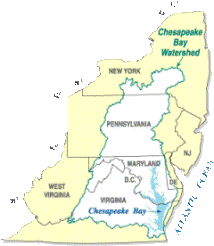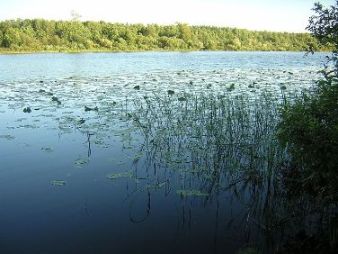Navigation
Living in Freshwater Everywhere...and Saltwater Somewhere?
The Range of a Bluegill
Bluegills
are accustomed to living in a variety of aqua tic habitats. They are native to central and eastern North America.
However, stocking programs and other forms of intended and
unintended transplants have allowed Lepomis macrochirus to
inhabit waters throughout the United States and Mexico.
Within this broad range, lakes, streams, rivers, and bays are
all suitable habitats. Interestingly enough, bluegills
have been found in Chesapeake Bay. This suggests that they
can tolerate 18% salinity! (Parr, 2002).
tic habitats. They are native to central and eastern North America.
However, stocking programs and other forms of intended and
unintended transplants have allowed Lepomis macrochirus to
inhabit waters throughout the United States and Mexico.
Within this broad range, lakes, streams, rivers, and bays are
all suitable habitats. Interestingly enough, bluegills
have been found in Chesapeake Bay. This suggests that they
can tolerate 18% salinity! (Parr, 2002).
Water Preference of Lepomis macrochirus
 Bluegills prefer to live in warm, clear water that is between
60°F-80°F (Rook, 1999). These conditions provide the highest
rate of growth and reproductive success. Unfortunately, waters
seldom stay within this temperature range. Nevertheless,
bluegills can survive in temperatures between 35°F-105°F
(Mills,
2004). At the same time, they have a preference to stay near
rooted vegetation and silt, sand, or gravel bottoms. In
non-reproductive months, bluegills have a home range of about 30
square meters (Parr, 2002). During cooler morning hours, they
stay near the water’s surface to stay warm. While they enjoy
the heat, this species does not tend to stay in direct sunlight;
therefore, it travels to deeper water for most of the daylight hours.
For instance, in a small lake, a particular bluegill may stay near
shore overnight and travel to deeper parts of the lake after the sun
rises. Still, they must fulfill other essential interactions
within their niche.
Bluegills prefer to live in warm, clear water that is between
60°F-80°F (Rook, 1999). These conditions provide the highest
rate of growth and reproductive success. Unfortunately, waters
seldom stay within this temperature range. Nevertheless,
bluegills can survive in temperatures between 35°F-105°F
(Mills,
2004). At the same time, they have a preference to stay near
rooted vegetation and silt, sand, or gravel bottoms. In
non-reproductive months, bluegills have a home range of about 30
square meters (Parr, 2002). During cooler morning hours, they
stay near the water’s surface to stay warm. While they enjoy
the heat, this species does not tend to stay in direct sunlight;
therefore, it travels to deeper water for most of the daylight hours.
For instance, in a small lake, a particular bluegill may stay near
shore overnight and travel to deeper parts of the lake after the sun
rises. Still, they must fulfill other essential interactions
within their niche.
Check out other facts about bluegills here:
http://www.rook.org/earl/bwca/nature/fish/lepomismac.html
Biotic Components of Bluegill Habitat
Bluegills generally stay in a school of 10-20 fishes (Holtan, 1990).  This school may include bluegills and other
species. Pumpkinseeds and smallmouth bass have similar habitat
requirements; thus, they are often found within the same school as
bluegills. Nutritional requirements cause these schools
to stay near sources of algae, zooplankton, and aquatic insects.
While bluegills consume some species within their
niche, they
are prey items for larger species. For example,
northern pike
troll weed beds to search for schools of sunfish species.
This school may include bluegills and other
species. Pumpkinseeds and smallmouth bass have similar habitat
requirements; thus, they are often found within the same school as
bluegills. Nutritional requirements cause these schools
to stay near sources of algae, zooplankton, and aquatic insects.
While bluegills consume some species within their
niche, they
are prey items for larger species. For example,
northern pike
troll weed beds to search for schools of sunfish species.
